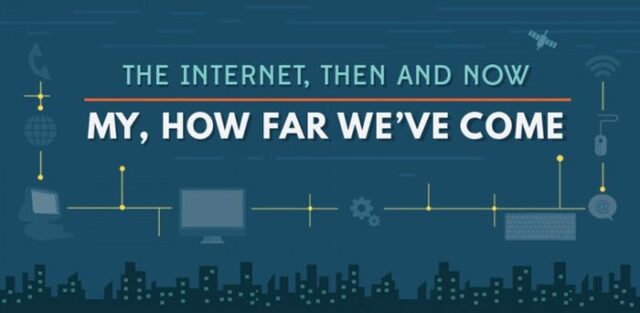

Unlike technologies such as the car or the telephone, the Internet has no single “inventor.” Instead, it has evolved over time. The Internet got its start in the United States more than 50 years ago as a government weapon in the Cold War. For years, scientists and researchers used it to communicate and share data with one another.
January 1, 1983 is considered the official birthday of the Internet. Prior to this, the various computer networks did not have a standard way to communicate with each other. A new communications protocol was established called Transfer Control Protocol/Internetwork Protocol (TCP/IP). This allowed different kinds of computers on different networks to “talk” to each other.
Today, we use the Internet for almost everything, and for many people it would be impossible to imagine life without it. Let’s take a deeper look into the history of the internet.
Sputnik
On October 4, 1957, the Soviet Union launched the world’s first satellite into orbit. The satellite, known as Sputnik, did not do much: It tumbled aimlessly around in outer space, sending blips and bleeps from its radio transmitters as it circled the Earth. Still, to many Americans, the beach-ball-sized Sputnik was proof of something alarming: While the brightest scientists and engineers in the United States had been designing bigger cars and better television sets, it seemed, the Soviets had been focusing on less frivolous things—and they were going to win the Cold War because of it.
After Sputnik’s launch, many Americans began to think more seriously about science and technology. Schools added courses on subjects like chemistry, physics and calculus. Corporations took government grants and invested them in scientific research and development. And the federal government itself formed new agencies, such as the National Aeronautics and Space Administration (NASA) and the Department of Defense’s Advanced Research Projects Agency (ARPA), to develop space-age technologies such as rockets, weapons and computers.
Arpanet
The Advanced Research Projects Agency Network (ARPANET) was an early packet switching network and the first network to implement the protocol suite TCP/IP. Both technologies became the technical foundation of the Internet. ARPANET was initially funded by the Advanced Research Projects Agency (ARPA, later Defense Advanced Research Projects Agency, DARPA) of the United States Department of Defense.
Packet switching was based on concepts and designs by Americans Leonard Kleinrock and Paul Baran, Britishscientist Donald Davies and Lawrence Roberts of the Lincoln Laboratory. The TCP/IP communication protocols were developed for ARPANET by computer scientists Robert Kahn and Vint Cerf, and incorporated concepts by Louis Pouzin for the French CYCLADES project.
Network growing
By the end of 1969, just four computers were connected to the ARPAnet, but the network grew steadily during the 1970s. In 1971, it added the University of Hawaii’s ALOHAnet, and two years later it added networks at London’s University College and the Royal Radar Establishment in Norway. As packet-switched computer networks multiplied, however, it became more difficult for them to integrate into a single worldwide “Internet.”
By the end of the 1970s, a computer scientist named Vinton Cerf had begun to solve this problem by developing a way for all of the computers on all of the world’s mini-networks to communicate with one another. He called his invention “Transmission Control Protocol,” or TCP. (Later, he added an additional protocol, known as “Internet Protocol.” The acronym we use to refer to these today is TCP/IP.)
The World Wide Web
Cerf’s protocol transformed the Internet into a worldwide network. Throughout the 1980s, researchers and scientists used it to send files and data from one computer to another. However, in 1991 the Internet changed again. That year, a computer programmer in Switzerland named Tim Berners-Lee introduced the World Wide Web: an Internet that was not simply a way to send files from one place to another but was itself a “web” of information that anyone on the Internet could retrieve.
Since then, the Internet has changed in many ways. In 1992, a group of students and researchers at the University of Illinois developed a sophisticated browser that they called Mosaic. Mosaic offered a user-friendly way to search the Web: It allowed users to see words and pictures on the same page for the first time and to navigate using scrollbars and clickable links. That same year, Congress decided that the Web could be used for commercial purposes.
The Internet’s takeover of the global communication landscape was almost instant in historical terms: it only communicated 1% of the information flowing through two-way telecommunications networks in the year 1993, already 51% by 2000, and more than 97% of the telecommunicated information by 2007. Today the Internet continues to grow, driven by ever greater amounts of online information, commerce, entertainment, and social networking.














